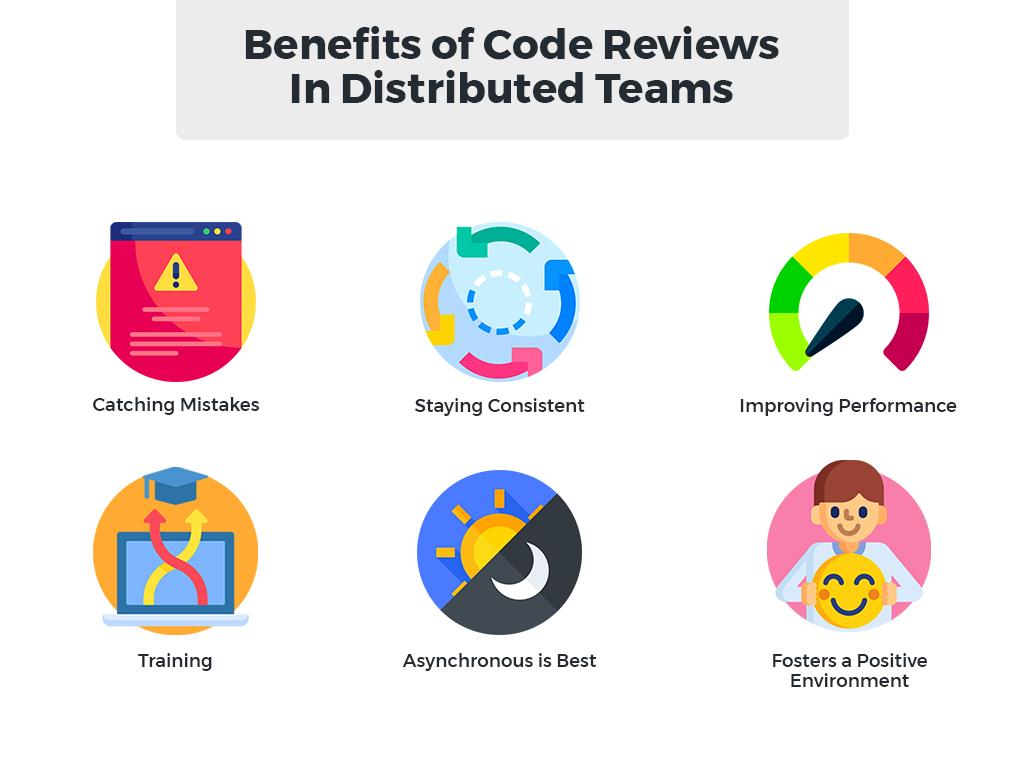In the rapidly evolving landscape of software development, ensuring code quality and maintainability has become paramount. As teams strive to deliver robust and scalable applications, the practice of code reviews has emerged as an essential component of the development process. Code reviews not only enhance the quality of the codebase but also foster collaboration among developers, promote knowledge sharing, and mitigate the risks associated with introducing defects. This article delves into the critical role of code reviews in software development, examining their benefits, best practices, and the impact they have on overall project success. By understanding the intricate dynamics of code review processes, development teams can better leverage this practice to drive continuous improvement and foster a culture of excellence within their organizations.
Table of Contents
- Understanding the Importance of Code Reviews in Ensuring Code Quality
- Best Practices for Conducting Effective Code Reviews
- Enhancing Team Collaboration and Knowledge Sharing Through Code Reviews
- Integrating Code Reviews into Agile Development Workflows
- Future Outlook
Understanding the Importance of Code Reviews in Ensuring Code Quality
Code reviews serve as a fundamental practice in software development, significantly enhancing the overall quality of the codebase. They act as a safety net, enabling developers to identify and rectify issues early in the development process. Key benefits of code reviews include:
- Improved Code Quality: Peer evaluations help catch bugs, inefficiencies, and inconsistencies that may have gone unnoticed.
- Knowledge Sharing: Team members can exchange insights and best practices, ensuring that no single individual holds all the knowledge.
- Adherence to Standards: Reviews encourage consistency with coding standards and help maintain uniformity across the project.
Moreover, code reviews foster a collaborative environment that promotes a culture of shared responsibility. When developers engage with each other’s work, they contribute to a dynamic learning process that can elevate the skill set of the entire team. Some of the additional advantages are:
| Advantage | Description |
|---|---|
| Early Bug Discovery | Reduces the cost and effort associated with fixing bugs later in the development life cycle. |
| Enhanced Security | Identifies vulnerabilities that could lead to security breaches. |
| Continuous Improvement | Encourages ongoing updates to the code practice through insights gained from peer reviews. |
Best Practices for Conducting Effective Code Reviews
Conducting effective code reviews is essential for maintaining code quality and fostering a collaborative team environment. Clarity and constructiveness are key elements during the review process. Reviewers should aim to provide feedback that is specific, actionable, and focused on the code rather than the individual. To facilitate better understanding, consider the following guidelines:
- Establish guidelines for what to review, including coding standards and best practices.
- Limit the scope of each review session to a manageable size; this helps prevent reviewer fatigue.
- Encourage discussions that promote learning rather than assign blame, fostering a culture of growth.
- Utilize tools like GitHub, Bitbucket or GitLab to streamline the review process and allow for easy commenting.
Furthermore, timing plays a crucial role in the success of code reviews. Reviewing code shortly after it has been written helps maintain context and reduces the cognitive load for the reviewer. Consider implementing a regular schedule for reviews, whether it be daily or bi-weekly, to keep feedback timely and relevant. Below is a simple overview of effective review timings:
| Review Frequency | Benefits |
|---|---|
| Daily Reviews | Ensures immediate feedback and quicker integration of changes. |
| Weekly Reviews | Allows for a more thorough examination and less rushed feedback. |
| Bi-weekly Reviews | Facilitates deeper discussions and holistic understanding of ongoing projects. |
Enhancing Team Collaboration and Knowledge Sharing Through Code Reviews
Code reviews serve as a pivotal foundation for team collaboration and knowledge sharing within software development. By engaging multiple team members in the review process, developers can benefit from a diversity of insights, which not only enhances the quality of the code but also fosters a culture of continuous learning. This collaborative practice encourages team members to discuss various approaches, challenges, and solutions, leading to improved problem-solving skills and deeper technical understanding. It also helps to break down silos by ensuring that knowledge is not confined to individual contributors, thereby promoting a more informed and agile team.
Furthermore, regular code reviews can establish a shared understanding of best practices and coding standards, making it easier for teams to maintain a consistent codebase. This consistency not only aids in onboarding new developers but also helps in faster resolution of issues when they arise. The establishment of a common language and framework for discussion can streamline communication and align the team’s efforts towards shared goals. To illustrate this, consider the following table of benefits derived from effective code reviews:
| Benefit | Description |
|---|---|
| Improved Code Quality | Identifying bugs and issues before deployment. |
| Skill Development | Providing learning opportunities for less experienced developers. |
| Consistent Standards | Maintaining uniform coding practices across the team. |
Integrating Code Reviews into Agile Development Workflows
Incorporating code reviews into Agile workflows enhances collaboration and fosters a culture of quality within development teams. This iterative approach allows for ongoing feedback, ensuring that potential issues are identified and resolved quickly. As developers pair up to review each other’s code, they not only share knowledge and best practices but also build stronger relationships through open dialogue. Key benefits of integrating code reviews in Agile include:
- Improved Code Quality: Regular code reviews catch bugs early and enforce coding standards.
- Knowledge Transfer: Less experienced team members gain insights from their peers.
- Faster Onboarding: New developers acclimate to the codebase through collaborative reviews.
- Enhanced Team Cohesion: Working together on code solidifies team dynamics.
To effectively integrate code reviews into Agile processes, teams should leverage tools that streamline the review workflow. Platforms like GitHub, GitLab, and Bitbucket offer built-in mechanisms for code review, allowing seamless integration with Continuous Integration/Continuous Deployment (CI/CD) pipelines. Implementing structured guidelines can also set clear expectations for reviewers and authors. Consider the following best practices:
| Best Practice | Description |
|---|---|
| Define Standards | Establish clear coding standards to ensure consistency across the codebase. |
| Limit Review Size | Keep code reviews small (e.g., 200 lines max) to maintain focus and efficiency. |
| Encourage Constructive Criticism | Foster a positive environment where feedback is constructive and focused on improvement. |
| Automate Where Possible | Utilize automated tools to catch basic errors and formatting issues before human review. |
Future Outlook
code reviews serve as an essential practice within the software development lifecycle, contributing significantly to code quality, team collaboration, and knowledge sharing. By systematically examining code before it is integrated into the main codebase, teams not only minimize the risk of bugs and security vulnerabilities but also foster an environment of continuous learning and improvement. The benefits of code reviews extend beyond immediate technical fixes; they help establish coding standards, enhance collective ownership of the code, and facilitate mentorship among team members. As software development practices continue to evolve, the critical role of code reviews will remain a cornerstone in ensuring robust, maintainable, and high-quality software solutions. Adopting effective code review practices can ultimately lead to more successful projects and a stronger development culture.






